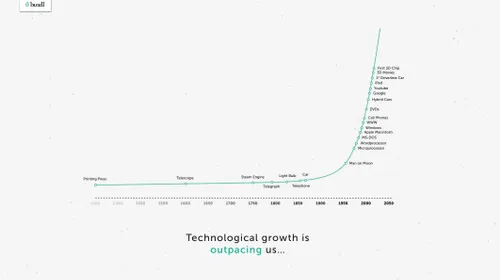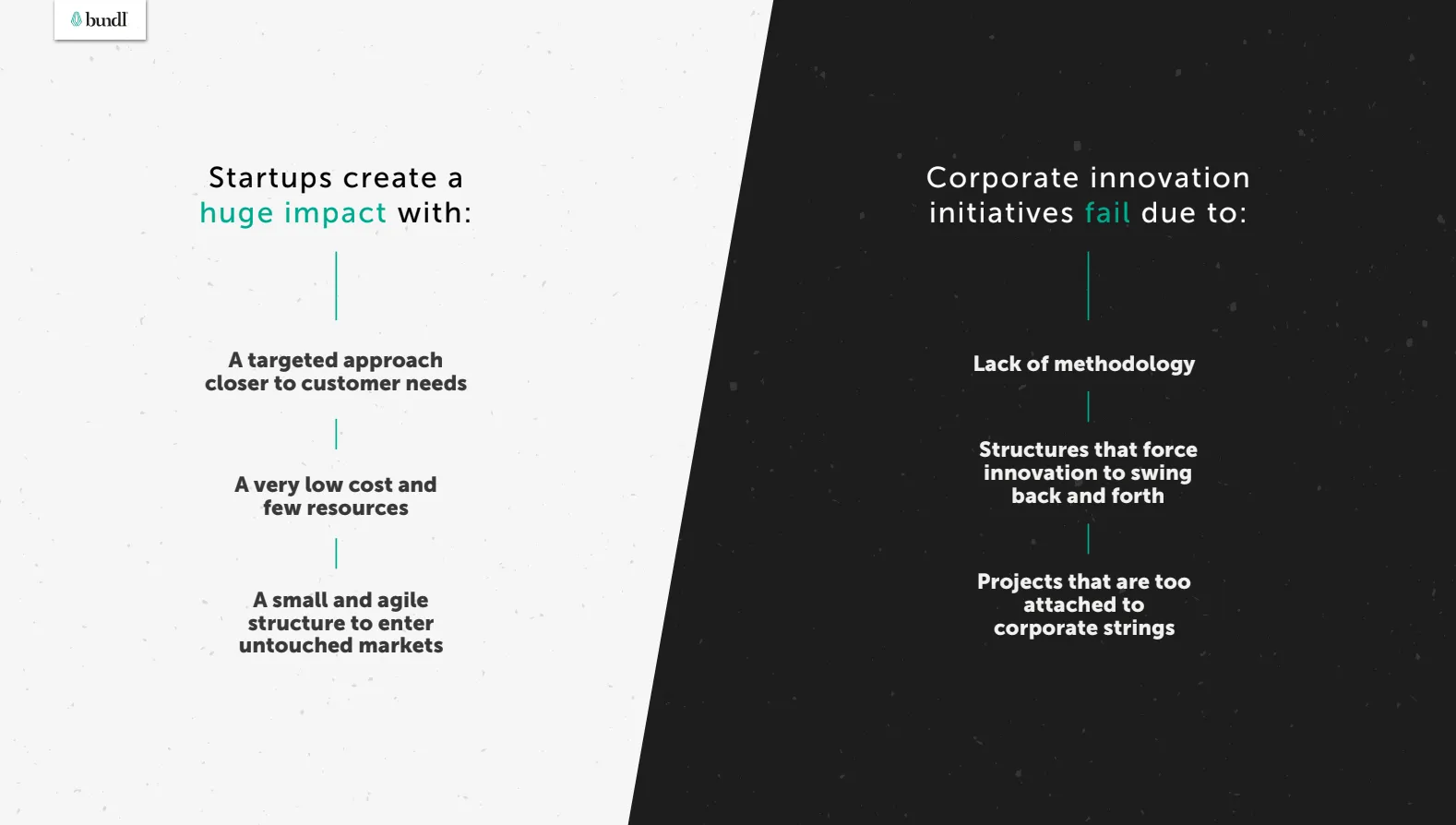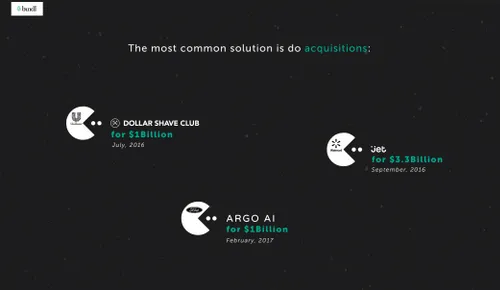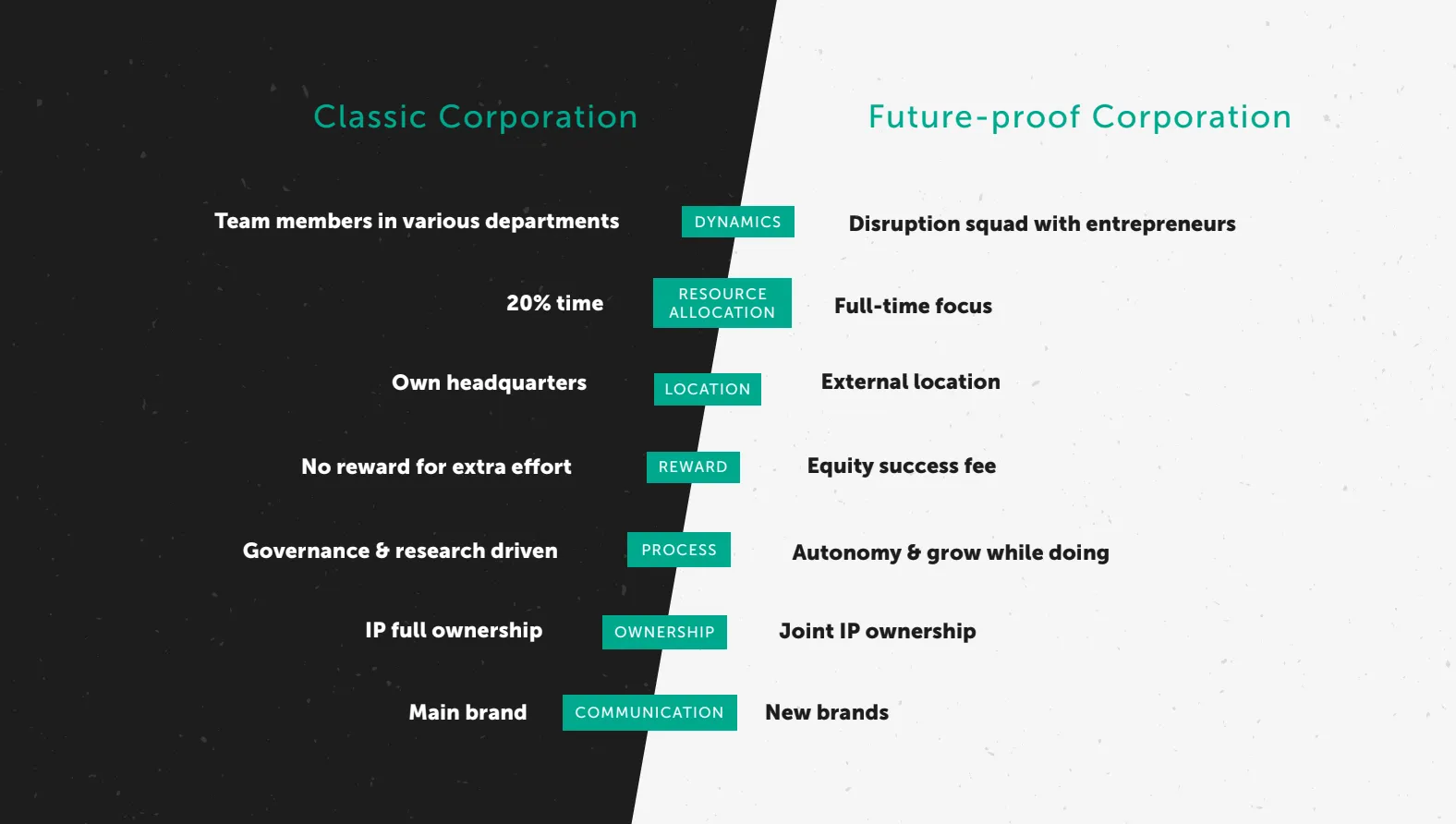Learn more about how to leverage your corporate assets to stay competitive in a market full of emerging startups.
All you need is the right mindset and structure to beat the startups at their own game
- Learn how to effectively scope, adopt and adapt
- Get 7 key tips to help you disrupt from the inside out
- Go from being a “classic corporation” to be being a “future-proof corporation”
Sneak peek °°
Preview slides to give you taste of the full report.
Report
7 strategies to future proof your business.


Fill in the form to download
This content is exclusive for Bundl Venture Club members.
If you're already a member, contact Leyash for your access link. If not, you can apply for membership below.
Apply for Membership






